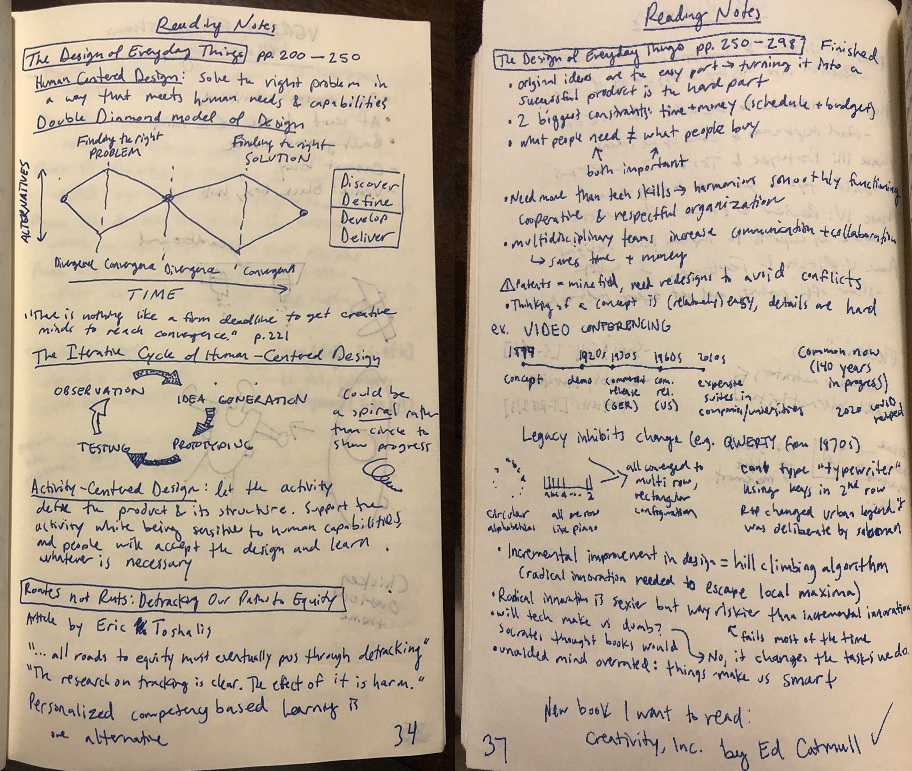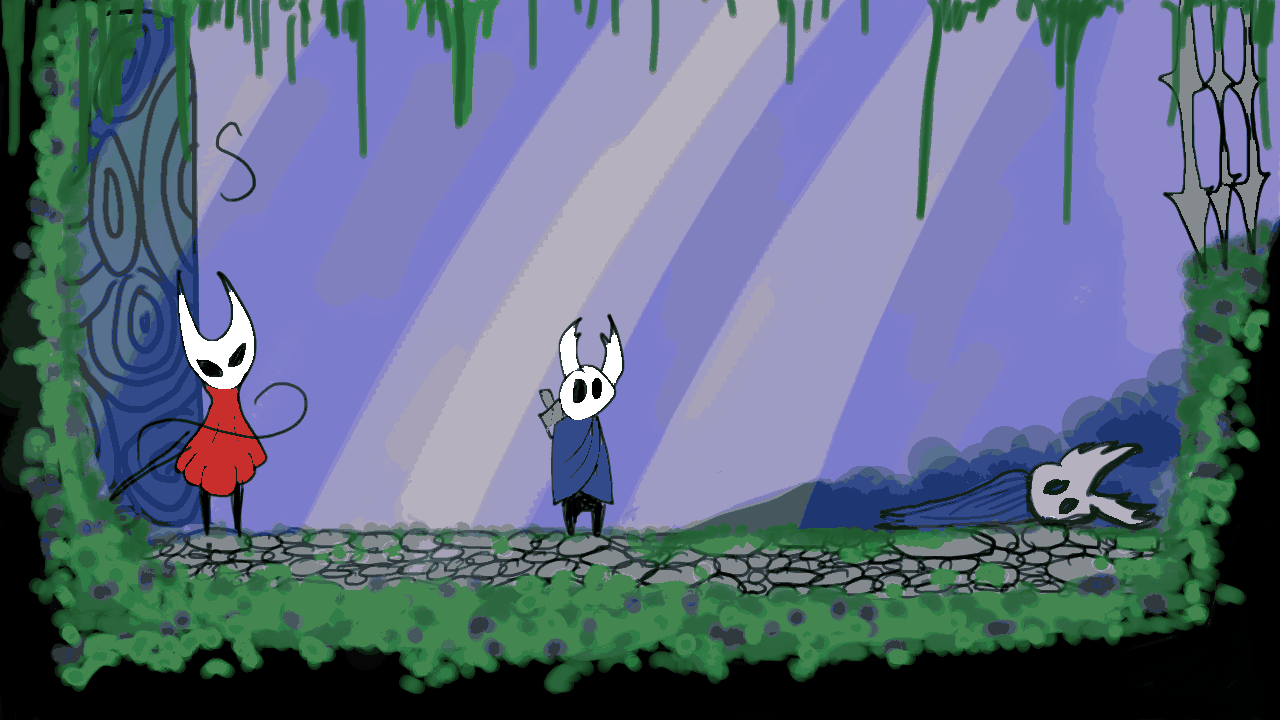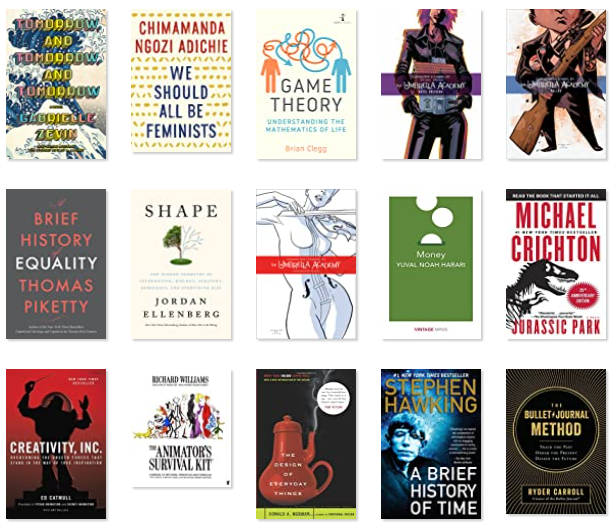Even though the number of books I read in 2022 was below the goal I set for myself I think it was a good year of reading for me. Since I’ve started tracking my reading with goodreads and setting goals it seems like I alternate between going over my goal then undershooting the next year. I’ve been aiming to read about 25 books a year. I think I will set a similar goal for 2023. This pace keeps me constantly reading something and finishing about 1-2 books a month usually and getting a few extra in during breaks and vacations. Here are my thoughts of some of the books I read in 2022:
The Bullet Journal Method by Ryder Carroll
I read this book early in the year and it inspired me to attempt keeping a bullet journal for the year starting in February. I kept up with it well until June then neglected it over the summer months but picked it back up in the last couple months of the year. I heard about BuJos from a co-worker who was thinking about teaching her students the bullet journal method to help them stay organized in an upcoming project she was planning for them. The book itself is pretty straightforward: a bit of a how-to on the method with the bulk of the text being explanations of the supposed benefits of adopting the method sprinkled with some anecdotes about people who found success in their own bullet journal journeys. I could’ve just done a quick google search to see what a BuJo was and the basics of how to do it but I still stayed engaged long enough to finish the book and try some of the proposed activities like goal setting with the 5-4-3-2-1 pneumonic: Come up with a list of personal and professional goals with varying timeframes (5 years, 4 months, 3 weeks, 2 day, 1 hour).

The Design of Everyday Things by Don Norman
I’ve read bits of this book before, in particular when I was pursuing my Masters in Secondary Education. I’ve wanted to read it cover to cover and finally got around to doing so around March. The current school I’m at is all about the Design Process so it was highly relevant to my work. Having taken a few courses on design throughout my education and reading for personal development I’ve encountered most of Norman’s ideas before but I always like going to the source when I can. It gets me to think of ways to apply the ideas to problems I’m currently facing. In the last quarter of the 2021-2022 school year I planned and implemented a learning lab where learners had to design and create electronic toys then combine their ideas into a toy line and make a business plan to pitch. One of the visual tools from the book was helpful for them: The Double Diamond model that presents design as a 4 part process (Discover, Define, Develop, and Deliver) where the 1st and 3rd phases involve divergence and coming up with lots of ideas and prototypes and the 2nd and 4th phase are about converging and identifying the best parts of the previous parts.
Creativity, Inc. by Ed Catmull
This one was a direct suggestion by another co-worker. I loved this book, my copy was full of post-it notes and underlined bits. In my role as a “learning designer” at a project-based school I related to the difficulties of facilitating others to engage well in creative acts. I had a ton of ideas for how we might apply lessons from the book to our organization. As a computer scientist I loved the technical parts near the beginning of Ed’s journey and as someone who got into 3D modeling and animation during the pandemic, the artistic content later was good too. Overall, each part of the book spoke to some part of my brain and captured my attention all the way through.
A Brief History of Time by Stephen Hawking
Last school year I taught some physics for the first time. I had several conversations about the subject with a colleague of mine with much more experience teaching physics than me and it made me want to explore some of the concepts in the field a bit more so I picked up what I assumed to be a classic. It was a good read and it reminded me of why some people are referred to as geniuses not necessarily because of how complex the topics that they tackle are but in how they can make something very complex seem somewhat simple (or at least straightforward) when they break it down for others. One of the really cool parts to me was Hawking’s explanation for how emitted light can be detected from black holes even though no light can escape the event horizon due to quantum relativistic effects (Hawking Radiation).
A Brief History of Equality by Thomas Piketty
This is the first Piketty book I actually finished (which I think was the point of this book). I made it one to two hundred pages into both Capital and Capital and Ideology–about 700 and 1000 pages respectively. I was really interested in the subject but after the introductions, they proved to be a daunting task to complete. But this one clocked in under 300 pages so I was able to make my way through it albeit slowly since it’s still a dense work. The gist is that over the past couple hundred years we’ve been trending toward more equal societies though on the economic front since the 80s we’ve been regressing due to unchecked global capitalism. There’s a need for highly progressive taxes and strong welfare states to get us back on track. He also makes cases for reparation between countries and for historically oppressed peoples within countries. Several forms of historic inequality were discussed alongside ways things have changed. It’s also interesting seeing trends reverse. One thing that still stands out to me is how some antidemocratic practices are now the mainstream accepted way of doing things such as shareholders getting direct proportional votes in business – many societies used to let people vote more in elections based on wealth and that seems preposterous to us now but we still accept it in the world of business. In places like Germany, the workers themselves have some decision making power by law (Codetermination).
Shape by Jordan Ellenberg
I’ve returned to teaching math this quarter and I always like thinking deeper about any subject I’m teaching to form more (and more interesting) connections between what we’re doing in class and what lies beyond. As the subtitle implies, there is a good deal of diversity of topics covered in this book including random walks, decision trees, markov decision processes and invariants. Near the end, the topic of gerrymandering came up which is something I’ve always wanted to make a geometry project out of. I like that Ellenberg didn’t seem to “dumb down” his explanations but trusted his audience to make some mental leaps while giving plenty of support to get you there. There’s also interesting stories about the history of the study of mathematics itself and the imperfect humans who have been players in that world.
Game Theory by Brain Chegg
This was a quick read. I’d have to say it wasn’t particularly informative or entertaining. It definitely feels like it follows a common modern non fiction formula (Take a big idea, break it down to smaller ideas, make a chapter about each of the smaller ideas, tell some anecdote in each chapter highlighting while that smaller idea is relevant and related to the bigger idea) but it doesn’t do it particularly well. I had a cursory understanding of game theory going into it and this book didn’t do anything to deepen my knowledge. I feel like it could have been a nice short online article to introduce game theory to those that have never heard of it. It doesn’t make me want to check out any more of the “Hot Science” series.
Money by Yuval Noah Harari
Having read Sapiens, Homo Deus and 21 Lessons for the 21st Century, I jumped at the chance to read more Harari and this was quite short and contained some of the ideas in Sapiens about human behavior. I can’t recall anything particularly new or noteworthy from my reading but it is always helpful to spend some time thinking about some of the concepts of economics and history that he brings up so I still consider the time investment of reading this worth it.
Jurassic Park by Michael Crichton
I’ve wanted to read this for a while and last semester I ended up reading it with my students. The other learning designers and I realized we hadn’t been having them read much fiction and we were running two biology related projects (genetic engineering and biomimicry) so this seemed like a fun tie-in. I have fond memories of watching Jurassic Park in my high school biology class. I think the book was also entertaining though not without some major flaws if you wanted to take the time to analyze it as a work of literature.
The Animator’s Survival Kit by Richard Williams
As I mentioned earlier, I got into 3D modeling and animation during the pandemic. In searching for resources on how to improve beyond just going through youtube tutorials I wanted to find some books as references. This one popped up in every list put together on “must reads” for animators. After going through it, I can see why. There was great, practical advice here as well as some interesting history of animation in the US. This was a book to follow along with and create some animations to really understand the principles that it laid out. I ended making a fanart animation of the Hornet fight from Hollow Knight that ended up being my highest upvoted post on reddit. Even though this was all 2D, many of the principles apply to 3D animation as well which is what I’m more interested in at the moment.

The Umbrella Academy (Vol 1-3) by Gerard Way and Gabriel Bá
My daughter and I watched The Umbrella Academy on Netflix after she read that it has similarities to Stranger Things. We really enjoyed it so I picked up the graphic novels that the show was based on. If I’m being honest, I didn’t really enjoy them as much as the show but I’ve never been too into graphic novels though I’ve wanted to get into them (I also watched Sandman this year and I’ve enjoyed Gaiman’s writing so that may be my next attempt at getting into the medium).
We Should All Be Feminists by Chimamanda Ngozi Adichie
I’m a fan of TED talks and I liked Adichie’s talk The Danger of a Single Story. We Should All Be Feminists is another talk she gave that I had not seen. This was a pretty short (44 small pages) text version of the talk so I checked it out. I already consider myself a feminist so I didn’t find myself challenged by the ideas presented but they were presented very clearly and in a compelling way. This is something I think I’ll share with younger readers.
Deep Work by Cal Newport
I read the ebook version of this (partially while at work – it seemed appropriate). The cover gives away the main point – we’re living in a world full of distractions so it’s a challenge to find ways to engage in deep work. The book makes a case for why deep work is important, defines what the author means by deep work (as opposed to shallow work) and shares ways you might do more of it. There are different methods presented from being a complete hermit and cutting yourself off from the internet completely, to carving out set chunks of time in your calendar to dedicate to focused work and some in-between compromises. Many of the traps for how we get sucked into shallow work sounded familiar to me and it made me evaluate how I’m currently spending time which is always a worthwhile thing to think about.
Meditations by Marcus Aurelius
I picked this up while on vacation with my family in Italy while we were going through the Colosseum gift shop. Like many philosophical works I’ve read, there are ideas that resonated, others that made me wonder about modern (or personal) applicability and some that made me pause and reflect.
Tomorrow, and Tomorrow, and Tomorrow by Gabrielle Zevin
I got suckered into studying computer science in college because I loved video games; then I ended up loving computer science as its own thing separate from a path for me to make games. I was suckered into reading this book based on the description and the reference to the characters starting a video game company which is something I’ve always wanted to do. The book wasn’t exactly what I expected but I was hooked and flew through it in a couple days (I’m usually a pretty slow reader). I connected to concepts like being mixed race, dealing with pain from childhood, complicated relationships and “gate-shut panic.” Happy I picked this one up and I think I’ll check out more of Zevin’s work even though they don’t seem to have anything to do with video games.
Books for my kids
I was looking back at some notes from previous years and I noticed I also talked about books I read with my kids and that made me a bit sad because I realize this is the first year that I didn’t complete a book with them. I was reading Redwall with my daughter but she lost interest and our tradition of reading together kind of fizzled out. Although, one thing I am happy about is that I do seem to have succeeded in instilling a love of reading in both of them. I tend to get books for them as gifts and I’m proud of my ability to select books for them that I think they will enjoy. When talking to my daughter earlier in the year she ran into the problem of not having a book to read because she’d already read all the books she has (She ended up doing a re-read and I got her a few more after that conversation and reminded her to make good use of libraries). My son has been going through the Game of Thrones books recently – I made a point of saying they may be a bit too “mature” for him (but secretly still being happy he’s tackling such long books and me voicing my concerns might even push that rebellious teenage brain of his to want to read even more). For Christmas I picked up The Inheritance Games by Jennifer Lynn Barnes for my daughter and the Mistborn Trilogy by Brandon Sanderson for my son.


